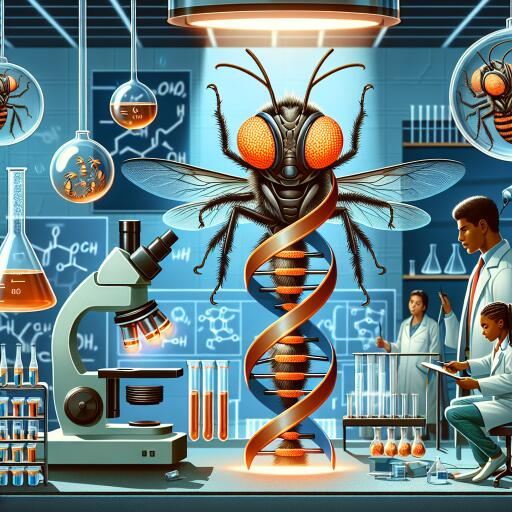A Breakthrough in Drosophila Genetics: Orange Eyes via CRISPR/Cas9
For over a century, the common fruit fly Drosophila melanogaster has served as a cornerstone in genetic research, unraveling the complexities of genetic inheritance, development, and disease mechanisms. Its simple genetic makeup, rapid lifecycle, and genetic malleability make it a prime candidate for sophisticated biological inquiries.
The Utility of GAL4/UAS System in Drosophila Research
A pivotal technique in the realm of Drosophila genetics is the GAL4/UAS system, which permits the precise control of gene expression within specific tissues or developmental stages. Derived from yeast, this system utilizes the GAL4 transcription factor to activate genes downstream of upstream activating sequences (UAS), thus facilitating targeted gene expression. In flies, this bipartite system enables the creation of tissue- or cell-specific GAL4 driver lines and a suite of genomic tools for dissecting molecular functions.
Tackling the Challenges with Eye Color Markers
Integral to this genetic toolkit is the mini-white gene, employed as a marker through its manifestation in eye color variation—from light yellowish-orange to deep red—depending on its insertion site and dosage. However, certain red-eyed GAL4 lines pose significant challenges in distinguishing recombinant progenies without additional markers. Our innovative approach, utilizing the CRISPR/Cas9 gene-editing technology, aims to circumvent these issues by modifying the eye color of selected GAL4 lines from red to orange, thus facilitating easier selection of genetic crosses.
CRISPR/Cas9: A Game Changer for Drosophila Eye Color
In our quest to modify the eye color, we specifically targeted two GAL4 lines known for their strong red eye pigmentation, OK371-GAL4 and elav-GAL4. Through CRISPR/Cas9-mediated genome editing, guided by a carefully chosen RNA targeting the white gene, we have successfully generated multiple lines of orange-eyed flies for both strains. These modifications not only make the selection process in genetic crosses more straightforward but also preserve the original GAL4 activity, ensuring these lines remain valuable resources for research.
Empowering Future Geneticists
A remarkable aspect of this project is its execution by undergraduate students, who carried out these sophisticated genetic manipulations and screenings. This hands-on approach has provided them with invaluable learning experiences in genetics and genome editing, demonstrating that advanced genetic research is not just the domain of specialized laboratories. With basic training and equipment, except for the brief use of a confocal microscope, students can contribute meaningfully to ongoing research, creating fly lines that will advance our understanding of genetics in practical scenarios.
Conclusion
The transition from red to orange eyes in Drosophila using CRISPR/Cas9 represents a significant leap forward in genetic marker technology. This advancement not only enhances the efficiency of generating transgenic lines but also opens up new possibilities for student involvement in cutting-edge research. The ‘Orange maker’ project exemplifies how innovative genetic tools can be both a means for scientific discovery and a platform for educating the next generation of scientists.










